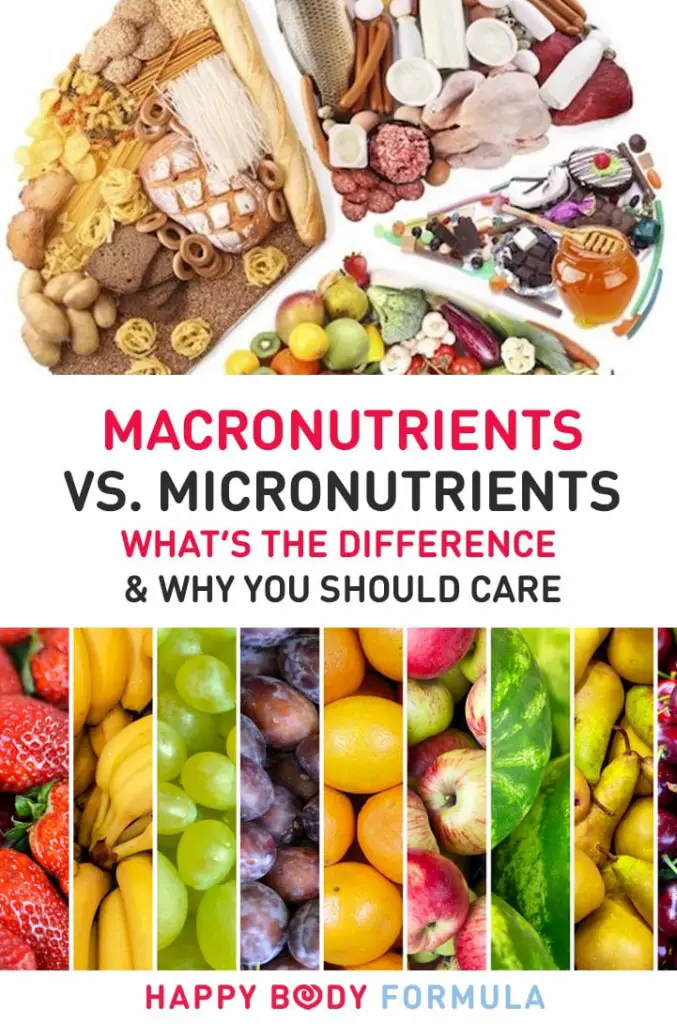Macros are big hype in the fitness community. You might have heard of them, or IIFYM a.k.a. “if it fits your macros.” Basically, any ratio of protein, carbs and fat are your macros!
So, you’re eating them now in some combination. Simple enough, right? Well, we could go on and on all day when it comes to anything nutrition-related if you haven’t noticed, and macronutrients are no exception.
Oh! And where there are macros, there are micros. These are the lesser known nutrients, but they’re still wildly important.
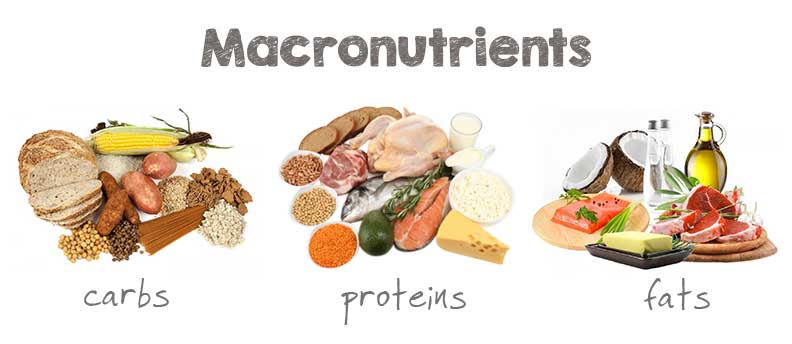
If you do enough research online about macros, you’ll find loads of recommendations. In all likelihood, you’ll have a hard time deciding what the right path for you is.
There is no right or wrong way, but the more you know about macros and micros, the more confident you can feel in making the best decisions for your nutrition. Let’s talk about it!
More about macros

Protein
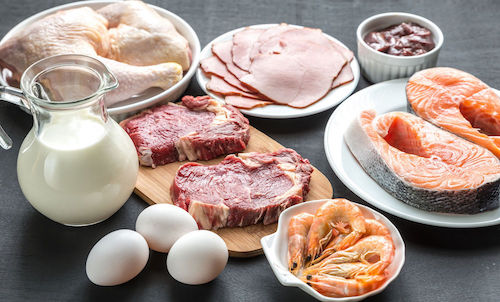
You probably know more about protein than you do about the other macros, mostly because it’s somehow made its way to the top of the list. It’s the popular kid in school, because it makes muscles grow.
You can have TOO much protein, but that’s another story. Protein is indeed fantastic for muscle growth and mass maintenance, but it’s good for so much more than that.
It is vital for human growth in general – especially in infants – and it can help bust sugar cravings and keep us feeling satiated for longer.
Proteins are made up of 22 amino acids which you might also recognize as “the building blocks of protein.” The fact of the matter is that amino acid balance is crucial to overall health and wellbeing.
Not all protein is created equal! Some will contain more of one amino acid than another. This is why variety in protein intake cannot be stressed enough.
Taking in different types of quality animal protein on a regular basis should ensure good levels of each amino acid, considering most animal foods and fish are complete proteins, meaning they contain all those that are essential.
Another good example of a complete protein is collagen. This can be an issue for planet-based eaters who have to pay more attention to food combinations.
Nearly 700 million people are protein deficient worldwide, so perhaps the benefits of eating enough each day aren’t widely known enough. If you’re going by the U.S. government’s protein standards, you want to aim for around 1 gram of protein per kilo of your [ideal] body weight.
The World Health Organization begs to differ, and suggests a marker of around 0.45 grams of protein per kilo of body weight. Ideally, we should be more focused on whether or not we’re meeting our requirements for amino acids (which is naturally more difficult to gauge).
To sum it up, all aimal foods are primarily sources of protein including beef, lamb, pork, chicken and fish. Some plant-based sources include legumes, quinoa, soy and soy products such as tofu, lentils and even rice.
Carbs
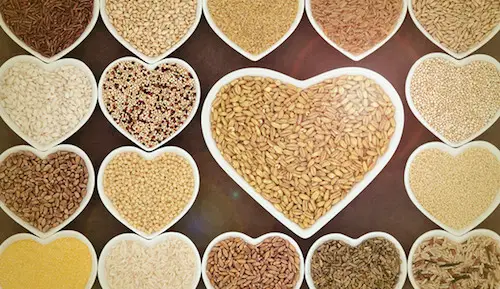
If you think of a fire, you can envision carbs as your kindling. While they get the flame going, they won’t keep it going. No – it needs a little something else (and we’ll get into that below).
At the same time, carbohydrates certainly serve their purpose! They provide quick energy to the brain and body, which tends to be the reason we crave them (i.e. sugar); we understand that carbs will give us a quick hit, and we’ll end up with a burst of energy.
This makes them great for pre-workout fuel or an afternoon pick-me-up.
Carbs are either simple or complex, and one reigns superior in terms of sustainable energy. Your complex carbs come from healthy starches, while your simple carbs come from sugars.
These sugars head directly into the bloodstream and fizzle out fast, hence the sudden spike and drop we often get after a meal heavy in carbs. Some simple carbohydrates like grapes or honey aren’t detrimental to the system, considering we often have them in a modest amount.
One of the major factors that has changed our perspective on the carbohydrate’s impact on health is the discovery of resistant starch which provide our digestive system with a level of stability.
Another purpose of the carb was found in glycobiology, which has uncovered the idea that many carbs act as communication devices which play a part in detecting blood type, immune function and more.
In general, all carbohydrates are plant foods – not animal foods. This is an easy rule of thumb if you’re still trying to determine which foods fall into which categories. This includes all fruits and vegetables in addition to grains and tubers.
Fat

While carbs are the kindling, fats are the firewood. They are satiating and they provide us with sustainable, long-lasting energy. They’re the key to endurance, and they’re what will keep us going.
Fats are what help us to avoid excessive hunger, blood sugar spikes and drops and fatigue due to hunger. Fats also provide a good buffer for carbohydrates, so it’s good to take them in together.
Dietary fat is also necessary for our bodies to use certain micronutrients – namely, fat-soluble vitamins A, E, D and K! Don’t fear fat; it’s good stuff. Oh, and it’s freakin’ delicious. Avocado, nut butter, good quality olive oil and butter… need I say more?
Fat intake impacts our health mainly in one way, which is our omega-3 fatty acid to omega-6 fatty acid ratio. This balance impacts so many aspects of our health. With all macronutrients, it’s important to recognize the priority for quality versus quantity, but fats ESPECIALLY need this focus.
We also need both unsaturated and saturated fats, plus fatty acids of all lengths – short, medium and long chain.
The Standard American Diet (SAD) doesn’t lend itself well to us creating this internal balance. Most refined and hydrogenated oils we’re taking in with processed foods are rancid because polyunsaturated fatty acids are too delicate to be handled.
They’re upping our omega-6s and driving down our omega-3 ratio big time, when we’re aiming for 1:1. Add trans fats into the picture, and we’ve got a big mess on our hands.
When we take in enough quality fats and a modest amount of carbohydrates, we become more effecient at using fat for fuel. This is helpful considering it is our energy source with more endurance, thus increasing our endurance!
Quality sources of fat include unrefined oils from avocado, olives or coconut, pasture-raised and/or grass-fed animal fats like tallow and lard, wild-caught seafood, avocado fruit, and nuts and seeds (preferably soaked and sprouted).
Micronutrients
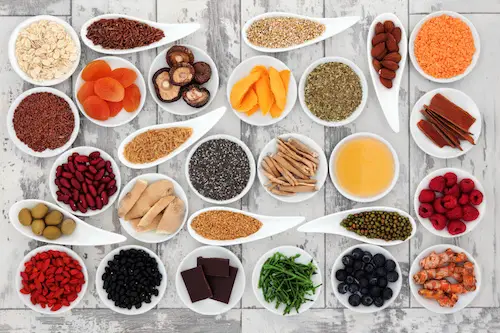
Micronutrients include ALL vitamins, minerals, amino acids, fatty acids and phytonutrients. Basically, they’re everything else that’s in our food!
There are approximately 53 essential micronutrients. The body isn’t making these on its own, though, so it’s on US to ensure proper micronutrient intake. This number doesn’t even take into account all of the phytonutrients!
It’s much more difficult to ensure that we’re hitting our micros than it is our macros, but a balanced diet should do the trick. Just take a look at the photo above and tell me the first thing you notice. Color has a lot to do with it!
In short, focusing on a wide range of seasonal, colorful, fresh and organic produce including both fruits and vegetables will put you in good shape.
On top of taking in enough protein to ensure amino acid balance (amino acids in and of themselves are considered micronutrients) and fatty acids to help absorb some key vitamins, this will put us in a good space to receive and actually absorb proper levels of micronutrients.
You also want to focus on a balance of flavors from sweet and spicy to bitter and salty. Finally, placing a slight emphasis on alkalizing and acid-forming foods can help establish proportionate micronutrient levels in the body.
Still, problems are presented when we question the health of soil our food is being grown in as it deteriorates. It can also be difficult for some to eat enough fruits and veggies each day.
In that case, taking a general supplement can be quite helpful. We like this multivitamin.
Should I count my macros?
Ideally, these explanations of macronutrients and micronutrients will show you that it’s really not that complicated. If there are two things that you took away from this learning, I hope it’s this:
- Quality matters. The quality of macronutrients in the diet is one of the first things I would look at if I were evaluating someone’s food journal and attributing my findings to their health and wellbeing.
- Variety matters. Again, I would assume someone in optimal health was eating with the seasons, cycling through different sources of protein and fat and overall getting in a wide range of vegetables and fruits to ensure micronutrient balance.
If you want to count your macros, I want this process to be simple for you too! You can tweak macros to align with your fitness goals, but you might want to work closely with a trainer to do so, or simply do more research on your end.
I’m going to talk about balance for someone who is eating a real food or paleo diet. This range is safe, healthy and happy for the majority of people if the macros that make it up come from whole foods.
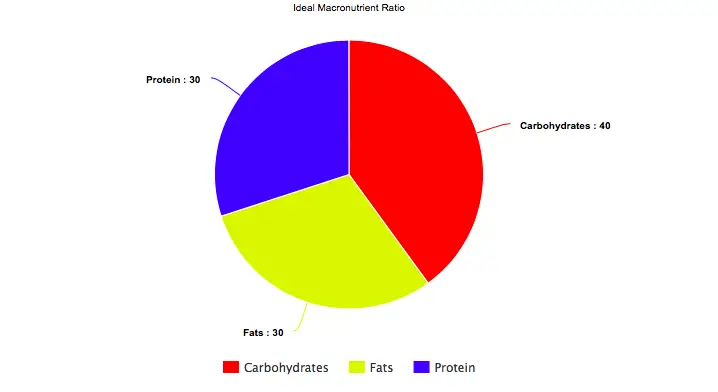
The SAD features an intake of more than 50% carbohydrates. While this isn’t so far off from our chart, we’re assuming that 50% is mostly comprised of quick carbohydrates from wheat and added sugar.
Your 40% will ideally consist of slow carbs in the form of fresh veggies – both green and starchy, a modest amount of fruit and occasional grains or seeds such as quinoa, rice and oatmeal.
Moreover, the Standard American Diet generally features a fat intake around 35%. While this is a relatively healthy range, the fats being eaten are not consumed mindfully with essential fatty acid balance in mind.
Finally, these percentages leave just 15% for protein! With our deficiency epidemic, this is not a healthy standard to reach for each day.
Using an app like MyFitnessPal will help you plug in what you’re eating and automatically calculate macros for you. You can plug in your own macro goals on the app, and it will create a graph like the one above for you to reference.
For the most accurate measurements and macro readings, use a food scale! This will give you a better idea of what you’re eating, and where you might want to tweak it. Counting macros can be helpful outside of fitness, physique or weight loss goals.
It can help you dial in on foods you might be eating too much or too little of, or it can help you attribute symptoms to food intake. Knowledge is power and knowing how our nutrition impacts us arms us with tools for lifelong health.
I hope you learnt more about what makes our food both nutritious and delicious in this article on macros today. Plus, I hope we could shed some light on the right macros for you. If you enjoyed reading, hit the ‘Share’ button! For Pinterest, share from here.
Music, mountains, dogs, travel, food and friends.

